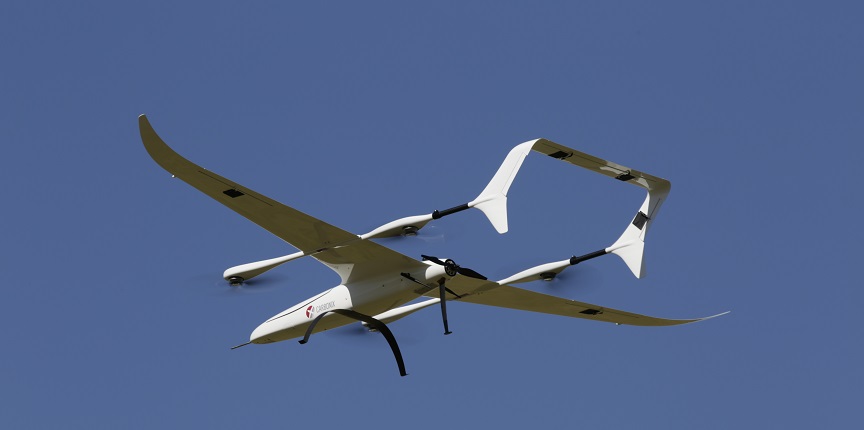
SYDNEY: H3 Dynamics and Australian UAV producer Carbonix are coming collectively to start development and manufacturing the primary Australian hydrogen-electric VTOL (vertical take-off and landing) unmanned plane system (UAS).
Carbonix is Australia’s main UAV producer with distinctive expertise in superior composite manufacturing, aerostructure design and sophisticated management systems for vertical and touchdown capabilities. H3 Dynamics has been engaged on cutting edge hydrogen UAV technology for over 15 years, and has simply launched a brand new ground-breaking hydrogen-electric nacelle technology.
Compared to batteries, hydrogen electrical systems will increase flight durations by a number of orders of magnitude, matching the scale of the Australian continent, its low inhabitants density, and its globally distinctive expertise in “beyond visible line of sight (BVLOS) commercial drone operations.
Hydrogen-enabled vary elongation will support Carbonix’ existing lengthy distance linear inspection applications such as grid lines and pipelines, mining industry mapping and surveying throughout large expanses of land – which proceed to depend on the use of costly helicopters or light aircraft.
The newly introduced partnership aligns with Australia’s broader hydrogen and decarbonization plans, in Carbonix key end-user markets such as mining and logistics, the place passenger plane and helicopters, in addition to battery or combustion engine drones are already getting used – and will now be transformed to utilizing locally-produced hydrogen, additional fueling the success of main Australian companies such as Fortescue.
Moving quick and beginning now, H3 Dynamics will be integrating its off-the-shelf hydrogen systems to Carbonix’ existing fleet of small unmanned VTOL systems – enabling coaching and accelerating field experience.
“Creating clever lengthy vary aerial systems enabling dependable and efficient entry to critical distant data whereas respecting the environment is key to us,” said Philip Van der Burg, Carbonix CEO.
“We will work with H3 Dynamics to full the hydrogen worth chain for a number of quickly rising UAV segments, and to do it a lot extra quickly – proper right here in Australia.”
Carbonix’ subsequent generation H2-VTOL UAV will make use of H3 Dynamics’ revolutionary hydrogen-electric nacelle technology, with a first-in-flight milestone introduced a number of days ago. H3 Dynamics’ patented distributed hydrogen-electric propulsion technology liberates the main fuselage, making room for bigger sensors or extra cargo for autonomous supply covering lengthy distances. The particular nacelle system liberates fuselage quantity for aerial deliveries, opening up medical deliveries to distant communities in Australia.
“Australia will most likely be the primary to make use of commercial electric-powered drones that use hydrogen rather than batteries, so as to fly for a lot of hours at a time and attain these distant locations, or survey a lot bigger areas of land,” said Taras Wankewycz, CEO H3 Dynamics.
Range elongation additionally means flying past visible line of sight (BVLOS), the regulatory fringe of the worldwide commercial UAS sector. With its massive land mass and low inhabitants density, Australia is certainly an ideal global experiment base Beyond Visual Line of Sight (BVLOS) operations.
In September, H3 Dynamics introduced its Australian BVLOS plans with Ripper Group in Australia, a Carbonix drone operator, beginning with the deployment of fully autonomous drone stations able to BVLOS operations throughout a number of sites, in applications beginning from mining to photo voltaic farm surveying, wildlife and ocean safety and life saving. Introducing BVLOS drone stations was initiated earlier, to assist ease regulatory approvals for extra succesful hydrogen VTOL drones, such as these Carbonix are working on.
“We are satisfied unmanned systems are the evolutionary beginning level to more and more large hydrogen powered flight platforms, the place testing, certification and regulatory approval challenges vary based on plane weight. H3 Dynamics’ plan is to extend the size of hydrogen air frames yearly till we’re able to fly passenger-scale aircraft. We need to mature airborne hydrogen technology in today’s existing uncrewed aviation markets as a primary important step towards that final vision,” says Taras Wankewycz, CEO and co-Founder at H3 Dynamics.
The full solution will be made in Australia in shut partnership with ASX-listed Quickstep – Australia’s largest independent aerospace composite company, which is additionally the producer of Carbonix UAV frames. Quickstep has an ongoing development program for clever composite hydrogen storage solutions, which could additionally quickly be utilized commercially in H3 Dynamics’ hydrogen fuel cell nacelles for hydrogen flight.
